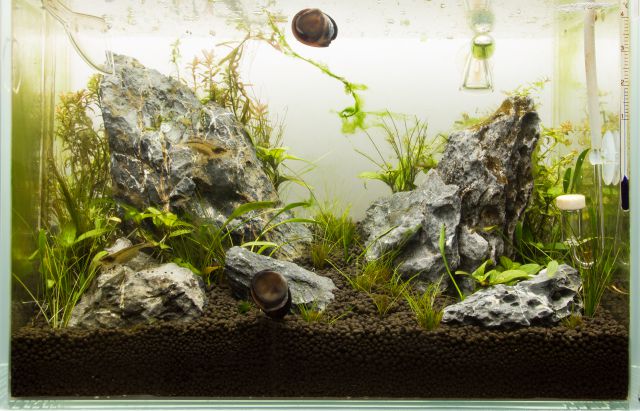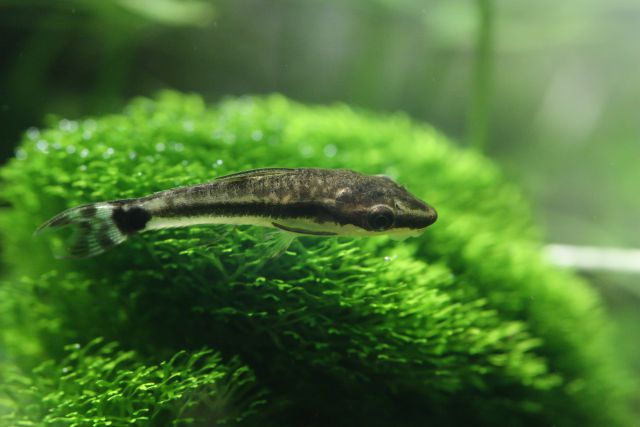In this video, the internationally renowned aquascaper Oliver Knott shares many tips and tricks for algivororous aquarium inhabitants. He also briefly explains, which water values are important during the cycling phase, before introducing the first fish and shrimp into the tank.
Algivorous invertebrates
Invertebrates like snails and shrimp are excellent algae killers. Apart from regular dwarf shrimp like the various colourful Neocaridina davidi, first and foremost the so-called Amano shrimp are very efficient against algic films and green thread algae. Snails like Neritina, Vittina or Clithon sp. have proven to be very efficient against algic films caused by diatoms and green spot algae, as well as other green films.
It is of vital importance to crowd the tank with sufficient algivorous animals. First of all the animals feel more comfortable in a group, and also, a noticeable reduction of the algae infestation is unlikely with only a few algivores in the tank. As a rough rule of thumb you should calculate with one animal per 10l.

Snails and shrimp are taking care of algic growth during the cycling phase.
As Oliver describes in the video, invertebrates can move into the aquarium quite early - after about two weeks of cycling. Prerequisites for this, of course, are the appropriate water values, in which, above all, ammonium and nitrite should no longer be detectable. Both substances can be poisonous for the inhabitants. The concentration of the substances in the aquarium water can be determined by appropriate water tests.
If you want to know more about the topic, the article "algae eaters in the aquarium" offers more detailed information about algivorous invertebrates.
Fish as algae eaters
Oliver Knott recommends waiting a month before settling the first algivorous fish into the aquarium. Again, the condition is that ammonium and nitrite are no longer detectable as far as possible. Smaller fish like Otocinclus are recommended as algivores.

Using their suckermouth, these fish feed on growth and biofilms which grow on the aquarium’s panes, large plant leaves and also on other decorations. It should be noted that some catfish require wood for their digestion. The setup of an aquascape with catfish should therefore always include some driftwood. Additionally these animals can also be fed with special food tabs with wood content.